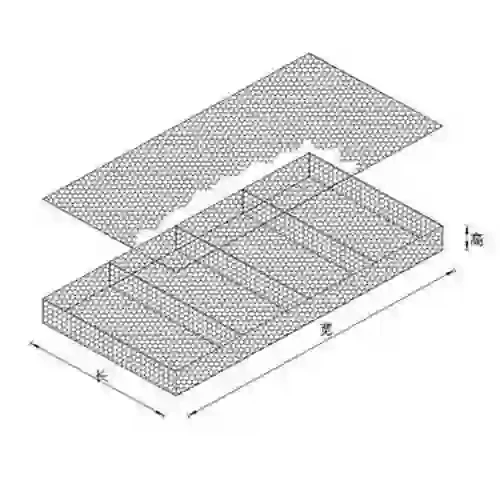-
 Phone:
Phone: -
 Email:
Email:

Exploring the Differences Between Barbed Wire and Razor Wire for Security Solutions
The Significance of Barbed Wire and Razor Wire in Security and Society
Barbed wire and razor wire are two of the most recognizable forms of perimeter security around the world. While they may seem like simple materials, they serve a significant purpose in various aspects of security, property management, and social boundaries. This article delves into the history, functionality, and implications of using barbed wire and razor wire in contemporary society.
Historical Context
Barbed wire was invented in the late 19th century, with patent applications emerging around 1867. It was initially designed to fence livestock and manage agricultural land. Its sharp barbs made it difficult for animals to cross, effectively keeping them contained. The invention revolutionized agricultural practices and played a key role in the expansion of ranching in the United States. However, as its utility became recognized for security purposes, barbed wire started being used in military applications, prisons, and various types of secure facilities.
Razor wire, a development of barbed wire, emerged in the mid-20th century. It consists of sharp blades or barbs affixed to a wire strand, making it even more difficult to breach. Razor wire is often used in high-security environments, such as correctional facilities, military bases, and government installations. Both barbed and razor wire symbolize not only physical barriers but also the complex interplay between security, control, and freedom.
Functionality and Applications
The primary purpose of both barbed wire and razor wire is to create physical barriers that deter unauthorized access. Their design makes them effective deterrents; anyone attempting to breach these barriers risks injury. Barbed wire is typically used in agricultural settings, construction sites, and residential properties to secure perimeters. Its presence often signals caution and serves as a warning to would-be intruders.
barbed wire and razor wire

Razor wire, on the other hand, is specifically geared toward high-security applications. Its menacing appearance suggests a greater level of danger and is often seen atop high walls and fences. Because its design allows for more aggressive deterrence, it has become a staple in prisons and on military bases, where security is paramount.
Both forms of wire have also found applications in urban settings to discourage trespassing in vacant lots, industrial facilities, and areas deemed hazardous. While they are effective deterrents, their use can often signal deeper societal issues, reflecting the need for heightened security in certain environments.
Social Implications
The presence of barbed and razor wire can evoke mixed reactions. On one hand, they are essential for ensuring safety and protecting property. On the other hand, their omnipresence can represent a societal shift towards increased surveillance, control, and the normalization of incarceration and confinement. In many cities, the use of these materials can illustrate divisions in society, highlighting issues of wealth and safety. Wealthier neighborhoods may employ security measures such as razor wire to deter crime, while lower-income areas may experience disinvestment, leading to higher crime rates and compromised safety.
Moreover, the use of these barriers often raises ethical concerns. The visual representation of confinement can perpetuate a culture of fear. The landscape of urban and rural areas dotted with these barriers can foster a perception of danger rather than safety. Critics argue that while such measures might provide immediate security, they could also reinforce social fragmentation and exacerbate feelings of isolation within communities.
Conclusion
Barbed wire and razor wire are more than just physical barriers; they represent broader themes of security, control, and societal structure. While effective in protecting property and ensuring safety, they also compel society to confront the underlying issues that necessitate their use. As we continue to navigate the complexities of security in an increasingly uncertain world, it is vital to balance the need for protection with the desire for community and openness. The conversation surrounding barbed and razor wire is, ultimately, a reflection of our societal values and priorities in the pursuit of safety and freedom.
-
Wire Mesh for Every Need: A Practical SolutionNewsJul.25,2025
-
Steel Fences: Durable, Secure, and Stylish OptionsNewsJul.25,2025
-
Roll Top Fencing: A Smart Solution for Safety and SecurityNewsJul.25,2025
-
Cattle Farm Fencing Solutions for Maximum SecurityNewsJul.25,2025
-
Affordable Iron Binding Wire SolutionsNewsJul.25,2025
-
Affordable Galvanized Wire SolutionsNewsJul.25,2025
-
Wire Hanger Recycling IdeasNewsJul.25,2025








